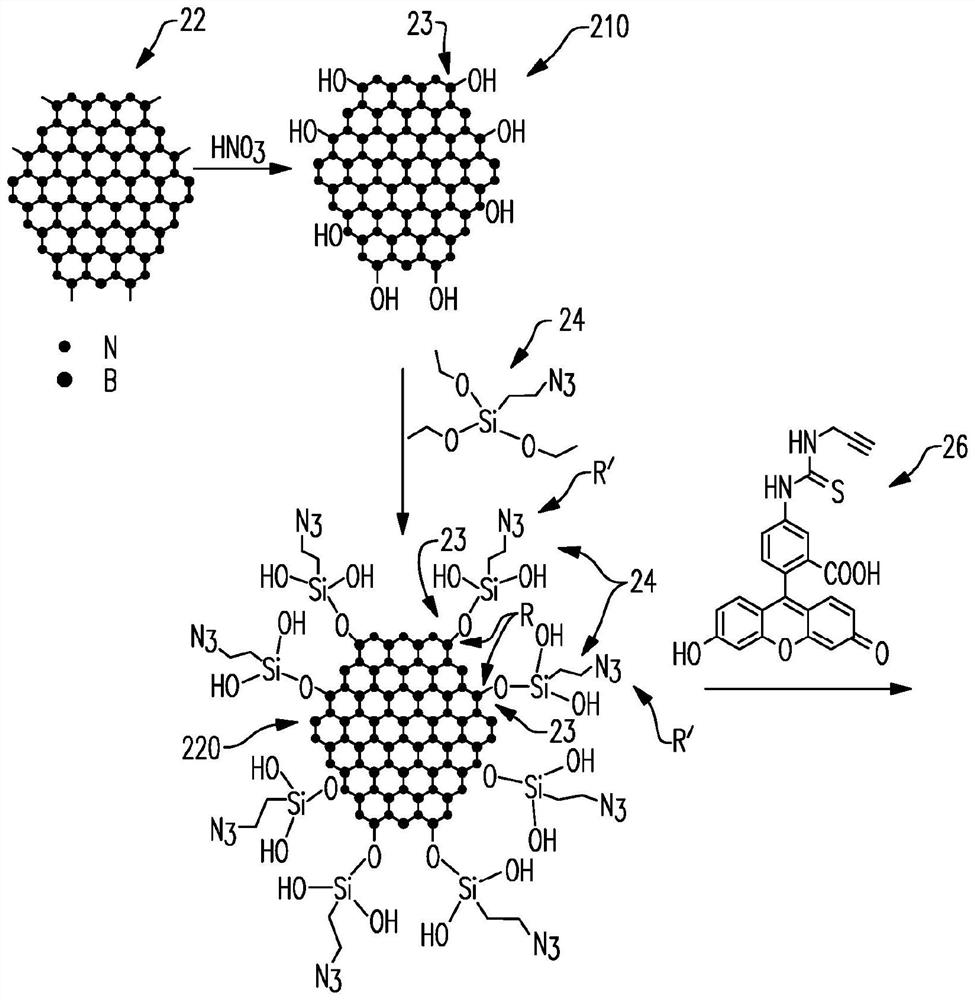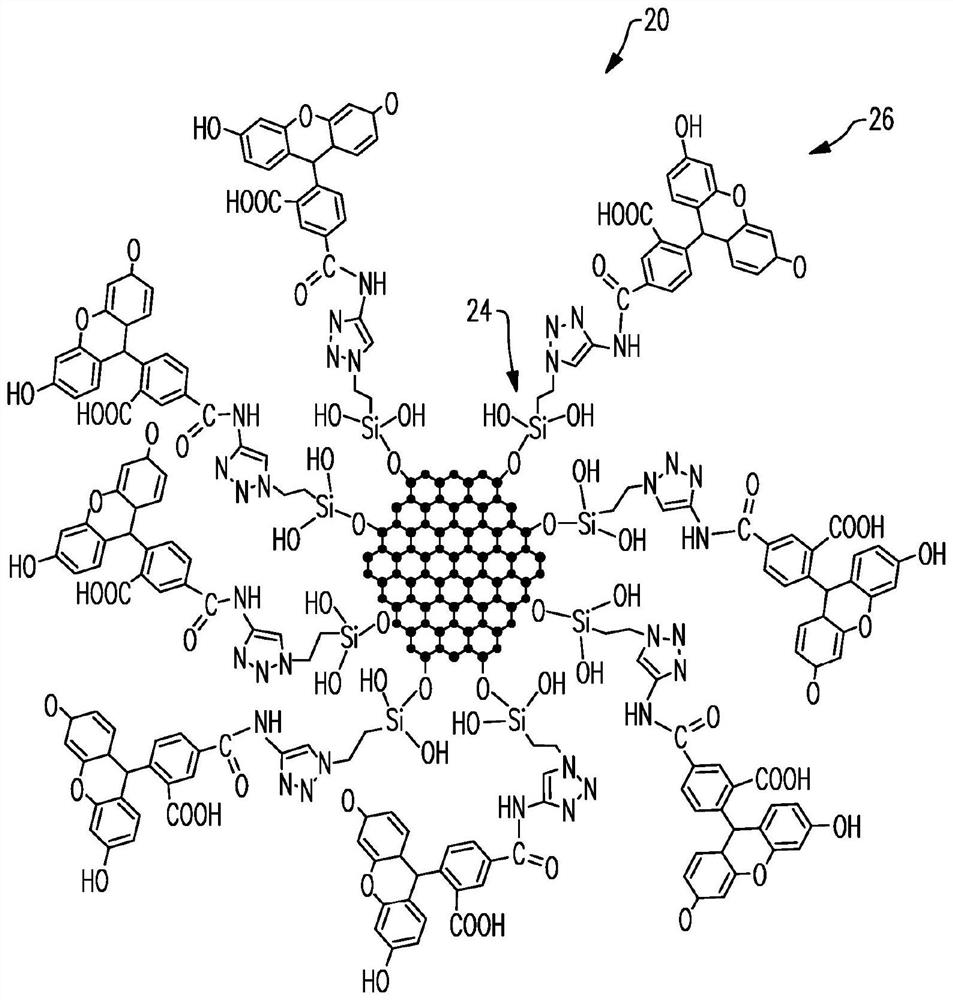High-brightness nanodot fluorophores by covalent functionalization
A nano-dot and functional group technology, applied in the field of high-brightness nano-dot fluorophores through covalent functionalization, can solve problems such as low brightness and low photostability
- Summary
- Abstract
- Description
- Claims
- Application Information
AI Technical Summary
Problems solved by technology
Method used
Image
Examples
Embodiment Construction
[0018] Very commonly, high brightness fluorophores comprise a carrier element, a fluorescent element, and a linker connecting the carrier element to the fluorescent element. For biomedical applications, each of the carrier element, linker, and fluorescent element must be biocompatible (although the requirements for biocompatibility will vary with the specific application).
[0019] An example carrier element is a processed nanomaterial such as carbon nanotubes (CNTs) and boron nitride nanotubes (BNNTs), both of which are useful in biomedical applications such as cellular drug delivery and spectroscopy applications. However, fluorescent elements attached to carbon nanotubes have been shown to exhibit quenching or reduction in fluorescence brightness.
[0020] It has been found that certain fluorophores with nanomaterial supports not only exhibit no quenching effect, but also exhibit orders of magnitude brighter brightness than other known fluorophores, as will be discussed in t...
PUM
| Property | Measurement | Unit |
|---|---|---|
| size | aaaaa | aaaaa |
| length | aaaaa | aaaaa |
| length | aaaaa | aaaaa |
Abstract
Description
Claims
Application Information
 Login to View More
Login to View More - R&D
- Intellectual Property
- Life Sciences
- Materials
- Tech Scout
- Unparalleled Data Quality
- Higher Quality Content
- 60% Fewer Hallucinations
Browse by: Latest US Patents, China's latest patents, Technical Efficacy Thesaurus, Application Domain, Technology Topic, Popular Technical Reports.
© 2025 PatSnap. All rights reserved.Legal|Privacy policy|Modern Slavery Act Transparency Statement|Sitemap|About US| Contact US: help@patsnap.com



